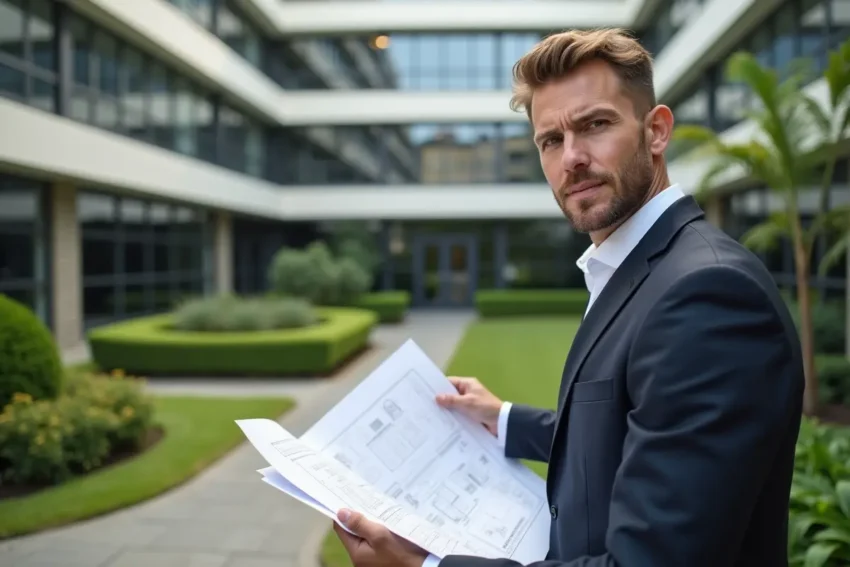Professional property management serves as the critical intersection between real estate investment and operational excellence. Far from being a mere administrative function focused on rent collection and minor repairs, it is a strategic discipline centered on maximizing asset value, ensuring regulatory compliance, and optimizing the tenant experience.
A professional property manager acts as the fiduciary steward of an asset, responsible for overseeing every aspect of a property’s lifecycle, from its curb appeal to its structural integrity. This deep dive explores the comprehensive scope of modern property management, detailing the coordinated efforts required across maintenance, capital planning, and resident relations to achieve superior financial performance and long-term Asset Preservation.
1. The Core Mandate: Proactive Maintenance Strategy
The bedrock of effective property management is a rigorous, proactive maintenance strategy that shifts focus from reactive “firefighting” to preventative care. Neglecting small issues invariably leads to costly major repairs, diminishing both the property’s value and the satisfaction of its occupants.
A robust maintenance plan operates on three key levels:
- Routine Maintenance (OpEx): Daily or weekly tasks, such as light bulb replacement, common area cleaning, and addressing minor plumbing or electrical faults. This category falls under operating expenses (OpEx).
- Preventative Maintenance (OpEx/CapEx): Scheduled activities designed to prevent equipment failure and extend the lifespan of systems. Examples include quarterly HVAC filter changes, annual roof inspections, and boiler maintenance. These predictable costs are crucial for budgeting accuracy.
- Emergency Maintenance: Rapid response protocols for critical issues (e.g., burst pipes, fire damage, security breaches). The efficiency of this response is a direct indicator of management quality and has a significant impact on Tenant Retention.
Effective management leverages technology to track service requests, manage vendor performance, and analyze recurring issues to identify patterns and potential systemic failures, thus converting operational data into actionable strategic insights.
2. Structural Integrity and Capital Improvement Planning
Beyond daily maintenance, a primary responsibility of Professional Property Management is managing the long-term physical health of the asset, specifically through structural maintenance and Capital Improvements (CapEx). Capital expenditures are large, non-recurring investments designed to enhance the property’s value, extend its useful life, or adapt it to modern standards.
This strategic process includes:
- Reserve Fund Management: Accurately projecting future CapEx needs (e.g., roof replacement in 15 years, parking lot resurfacing in 10 years) and ensuring adequate financial reserves are set aside. This prevents sudden, crippling financial demands on the ownership group.
- Building Systems Oversight: Regularly inspecting and upgrading major systems like HVAC, elevators, and fire suppression. Modernizing these systems often leads to energy efficiency gains, resulting in lower operating costs and a higher Net Operating Income (NOI).
- Structural Audits: Commissioning engineering assessments to verify the integrity of the foundation, load-bearing elements, and façade. Early detection of issues like concrete spalling or water intrusion can save hundreds of thousands of dollars in remediation costs.
Examples of value-driving structural improvements include updating lobbies with modern, durable materials, replacing single-pane windows with energy-efficient alternatives, and overhauling aging electrical infrastructure to support modern technological demands. These investments directly support Asset Preservation and justify premium pricing.
3. Enhancing Curb Appeal: Landscaping and Grounds Management
First impressions are pivotal in real estate, making high-quality Landscaping and grounds management a high-impact, visible component of a manager’s portfolio. The managed exterior environment, often referred to as “curb appeal,” directly influences property valuation, perceived quality, and the willingness of prospective tenants to pay market rates.
The focus here is strategic aesthetic maintenance that generates a demonstrable return on investment (ROI):
- Seasonal Planning: Implementing tailored planting, pruning, and fertilization schedules appropriate for local climate conditions. This ensures year-round attractiveness rather than intermittent bursts of color.
- Water Management: Employing smart irrigation systems and xeriscaping techniques to minimize water consumption—a critical environmental and operational cost concern.
- Hardscape Maintenance: This includes the preservation of non-living elements like walkways, retaining walls, parking lots, and outdoor amenity areas. Cracked pavement and broken railings are safety hazards and severe aesthetic liabilities.
- Snow and Ice Removal (Climates Permitting): Ensuring safe ingress and egress is not merely an aesthetic concern but a necessary liability mitigation measure.
A well-maintained exterior signals competent overall management, which is a powerful psychological factor in maintaining high Tenant Retention rates and attracting quality residents.
4. The Human Element: Leasing and Tenant Retention
Ultimately, the physical asset is only as valuable as its occupancy rate and the stability of its rental income. Therefore, professional management integrates physical upkeep with advanced leasing and tenant relations strategies.
The most effective property managers understand that the cost of tenant turnover often dwarfs the cost of providing excellent service:
- Efficient Lease Administration: Utilizing rigorous screening processes to mitigate risk, ensure fair housing compliance, and establish clear communication regarding expectations.
- Relationship Management: Creating a positive living or working environment through clear, regular communication, responsive issue resolution, and community-building initiatives (where appropriate).
- Driving Retention: High retention reduces vacancy, minimizes downtime, and saves significant expenditure on cleaning, repairs, and marketing needed between tenants. A positive move-out experience is equally important for reputation management.
By seamlessly managing the physical asset (structural integrity, landscaping) and the financial performance (maintenance budget, CapEx), while simultaneously cultivating high tenant satisfaction, professional property managers ensure the long-term profitability and sustainable appreciation of the real estate investment. It is this coordinated, multifaceted approach that defines the modern standard of Professional Property Management.

